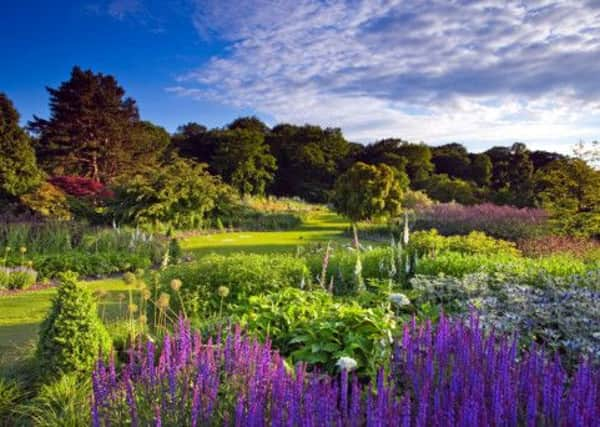Green campaign to lift the mood where grey now rules


But a new campaign is aiming to bring back the vibrant and uplifting colours of the countryside to suburbia.
The Royal Horticultural Society (RHS) is launching its “greening grey Britain” campaign to encourage people to plant trees, shrubs, climbers, hedges or flowers to attract wildlife, improve air quality and reduce urban temperatures and the risk of flooding.
Advertisement
Hide AdAdvertisement
Hide AdGardens are increasingly being paved over, with seven million UK front gardens containing concrete and cars rather than flowers and grass, the society said, increasing flood risk and reducing the availability of homes and food for wildlife.
Yet a survey of some 2,000 people for the RHS found that 95 per cent thought being in a beautiful garden lifted their mood and more than 60 per cent said looking at a street of paved-over front gardens saddened them.
Despite planning rules which aim to reduce the risk of flash flooding from run-off from paved areas, the poll also found that 60 per cent of people worry about paved front gardens and flooding.
The RHS will be launching a three-year target alongside this year’s annual Britain In Bloom campaign to transform 6,000 unloved grey spaces into planted-up places.
Advertisement
Hide AdAdvertisement
Hide AdAs part of the initiative they will be promoting ways of greening urban areas, from pulling up a paving stone and planting it up, to creating window boxes, planting front gardens and transforming grey community areas.
Alistair Griffiths, RHS director of science and collections, said: “Many of us get a boost by simply looking at a beautiful garden or having access to green space. So instead of paving over green we can all play a part in reducing the grey and brightening it, and us, up with some plants.
“On top of making us feel better and happier, if hundreds and thousands of people across the country grew more plants of different varieties in gardens and community spaces, it would all help to improve our air quality, benefit us, our wildlife and reduce temperatures and flooding risks.
“Greening grey Britain can be as big or small as anyone likes, the critical point is that collectively we can all make a positive difference one plant at a time.”
Advertisement
Hide AdAdvertisement
Hide AdThe RHS will be using its army of 300,000 Britain in Bloom volunteers to help with the campaign, and will also be putting the spotlight on front gardens, helping people find ways to have parking and incorporate plants at the front of their house, he said.
The society is promoting five simple steps that people could take in their gardens, which if many householders implemented could have a major positive effect - to plant a tree, a hedge, a shrub, a climber or a perennial plant.
Trees, hedges and climbers can cool buildings and reduce the effect of increased summer temperatures due to climate change, while garden plants and trees intercept intense rain, slow run-off and reduce the pressure on drains which can lead to flash flooding.
At RHS Garden Harlow Carr in Harrogate, visitors are welcome to show garden centre staff photographs of the space they are looking to spruce up so that they can get tailored advice.
Advertisement
Hide AdAdvertisement
Hide AdSasha Jackson, Harlow Carr’s marketing manager, was expecting an increase in visitors over the Easter period as people looked for gardening inspiration this Spring.
“What’s great is that our staff in the garden centre are all horticulturists so they’re ideally placed to advise people what’s best for their garden. It doesn’t matter what size - whether it is a small yard or whether you want to grow vegetables, fruit or herbs, or if you’re looking at more ornamental shrubs.
“It is useful to come knowing whether the space you have in mind is in shade or direct sunlight, if is a windy site and, if you’re intending to plant in soil, whether it is clay-like or acidic.”